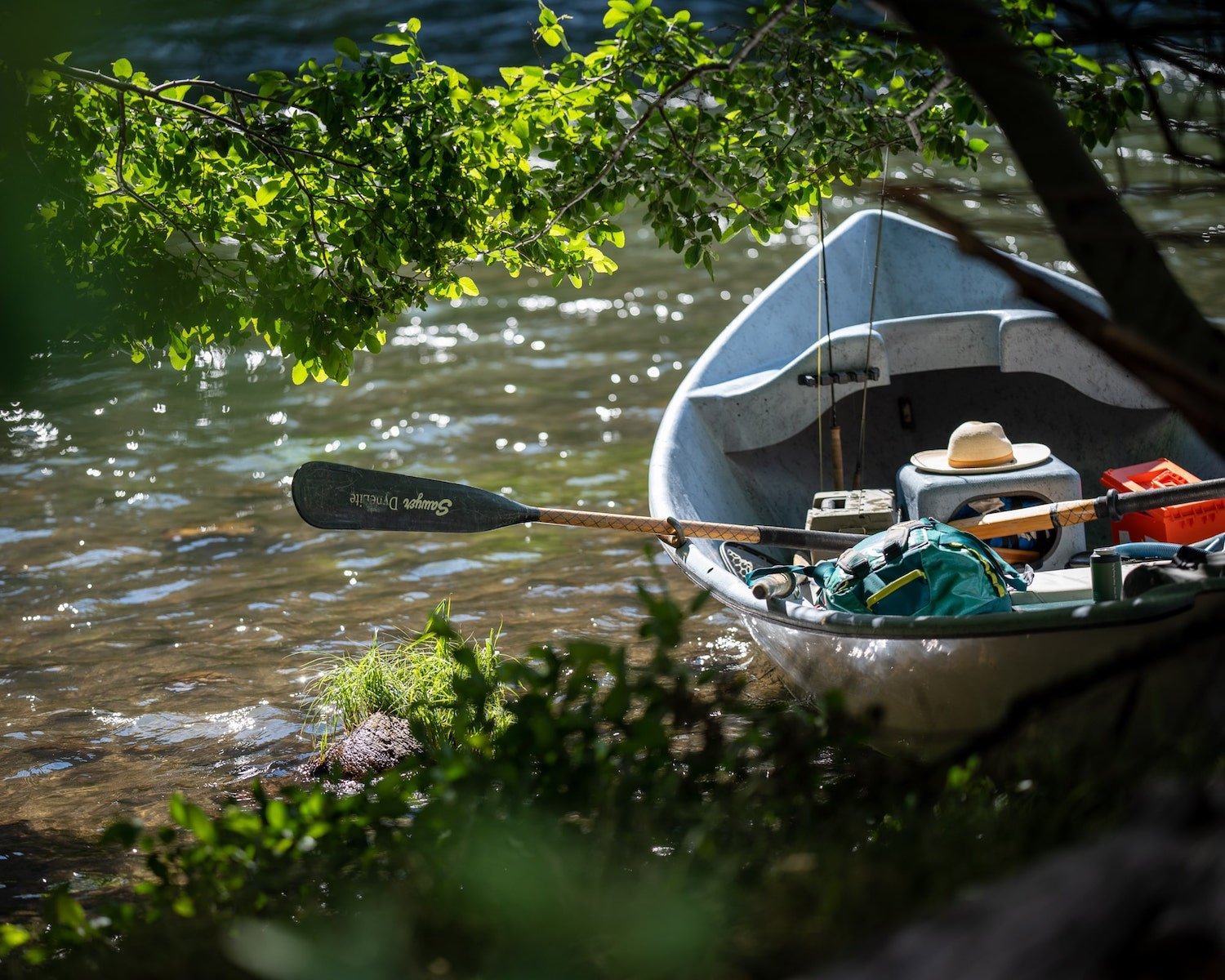The Deschutes Deserves Royal Treatment
The crew at Royal Treatment, wishing a royal reel maker a hardy annniverary.
The Naming of the Thing
On a magical autumn morning twenty some years ago, Joel La Follette was inspired to name some things that had yet to be named. He’d just landed his second Deschutes River steelhead, and was watching the sun clear the canyon rim, relishing and replaying the memory of the moment just past, of the mist that has settled over the water, how that steelhead’s incessant leaping had displaced the wisps of vapor with each jump, as if the battle was the highlight of some elaborately staged magic show, complete with fog machines and fans.
La Follette had just returned from a business trip to Boston, where he’d wandered into a fly shop and purchased some fly-tying materials. He tied two flies, the pattern for one of which emerged from his imagination, and had dangled from the lip of the wild fish he’d just released. “I decided to call it ‘Royal Treatment’ because I figured that’s what the morning had given me,” he recalls. “And later on, when it came time to name my fly shop, I decided to call it that, too. It’s proven to be a great fly, but it’s also a great way of doing business.”
A Long Love Affair with the Lower Deschutes
La Follette’s Royal Treatment (the shop) is in West Linn, but a vital portion of its business relies on the traffic of anglers headed to the Deschutes River. “It’s an economic driver, not only for my shop, but for the entire state,” says La Follette. “And not just for anglers, but for general recreation and tourism, too.”
La Follette caught his first Deschutes redside in 1967, at the tender age of 10. His family had a connection to a cabin at North Junction. It wasn’t long after that when he began his long-standing defense of the river. Back then, the Bureau of Land Management had proposed building a road from the locked gate upstream of Maupin all the way up river to Warm Springs. Not only did he write a letter in protest, he lobbied his grade school classmates to do the same.
The lower Deschutes River was enough of an inspiration to him that he gravitated toward a career in fly-fishing, all the while maintaining his vociferous defense of the river he loves best.
In the early 2000’s, he found himself standing at Jack Creek on the Metolius, with PGE’s lead biologist Don Ratliffe, releasing a bucket full of Chinook smolts into the river. The program Ratliffe described was enticing. Anadromous fish, extirpated from their historic habitat above the Pelton Round Butte dams since about the time La Follette was born, would soon be welcome back. “I figured either this would be really, really good, or really bad.”
The River that Could Be, Not the River that Was
Unfortunately for La Follette and the lower Deschutes, the river has slid toward bad. Water quality has suffered all in the name of a fish reintroduction program that isn’t working. “The river is a shadow of its former self, in my opinion,” he says. He describes how riffles he once fished have become mats of algae. How he hasn’t caught a bull trout in years without black spot disease on it. How “it’s b.s.” that ODFW claims there are no resident bull trout in the lower Deschutes. How the nighthawks have disappeared. How insect hatches have become more sporadic. But he’s not giving up.
“I hate to say ‘how it was’ because I’m hopeful we can restore it to some semblance of its former glory,” he says. As the DRA has encouraged its supporters to do, La Follette has written a letter to Gov. Tina Kotek, pointing out that the state is essentially letting DEQ get away with daily violations of Clean Water Act law. “It’s time to step in and hold PGE accountable,” he urges.
He sees the scenario DRA advocates for, nine months of the year of the coldest, cleanest water possible released from the depths of Lake Billy Chinook, as a common sense solution. “I would bet that after three years of that different flow scenario, you’d see some dramatic improvement,” predicts La Follette. “Rivers will heal themselves from a lot of bad things, but you have to help them.”
More From The Blog
Subscribe the the DRA Newsletter
The Deschutes River Alliance is your focused voice to protect the lower Deschutes River, its cold water flows and the fish and wildlife that are sustained by them. We send regular emails with important data and news about the lower Deschutes River. We will not sell or loan your contact information to others.
How to Support the DRA
Everyone wants clean, healthy water in the Deschutes River. Oregonians cherish our clean and healthy waterways to provide drinking water, wildlife habitat and recreational activities. The lower Deschutes River is a federally designated Wild & Scenic River, and a national treasure. It must be protected for the environmental and economic health of Central Oregon. We believe by working together we can return the lower Deschutes River to full health.






















